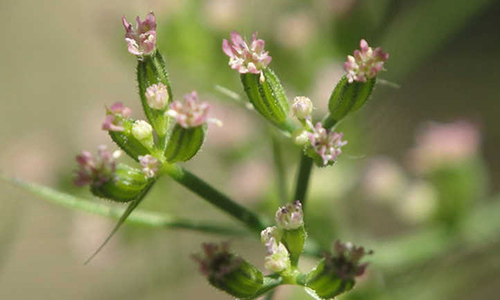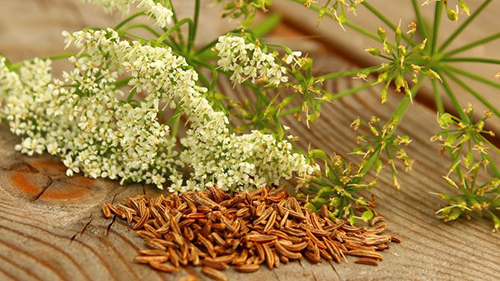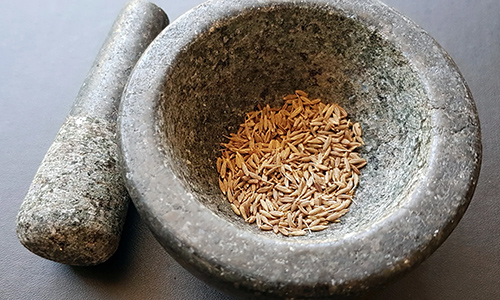Contents

The cumin plant was already used as seasoning or medicine by ancient Egyptians, as deduced from the fruits found in some tombs. In later centuries, its fruit was substituted by caraway, which has similar properties but a milder flavor. However, cumin is still an excellent medicine and seasoning. Salads with cumin have an exquisite aroma and can satisfy the most discriminated taste.
They are indispensable ingredients in traditional confectionery, which, besides acquiring their delicious flavor, become more digestible.
Cumin Plant Scientific Facts
- French: Cumin de Malte.
- Spanish: Comino.
- Environment: Native to western Asia, it has spread throughout the Mediterranean and is cultivated in some American countries.
- Description: This annual herbaceous plant of the Umbelliferae family grows up to 50 cm high and has very fine leaves. Its 5-6 mm large fruits grow on the tip of the umbel radi and have marked rough-haired stretches.
- Parts of the plant used medicinally: The fruits.
Healing Properties and Warning

Cumin contains 10 percent ethereal oil and an essence whose most crucial active component is cuminic aldehyde or cuminal. It has appetizer, digestive, and carminative (eliminates intestinal gas) properties.
Cumin also has a mild galactogenic effect, promoting milk secretion for breastfeeding women.
All properties are common to the fruit of other Umbelliferae species, such as caraway, coriander, and anise. The main difference with cumin is its peculiar flavor.
WARNING! Cumin essence must not be given to children since it can produce convulsions.

How to use Cumin
- Infusion with 2g of whole or slightly ground cumins (the tip of a teaspoonful) per cup of water. Drink a cup after lunch and another after supper. Babies can have two or three spoonfuls of this infusion after each meal.
- Power: The recommended dose is one gram, dissolved in water or milk after each meal.
- Essence: Take from one to three drops three times a day.
DISCLAIMER: All content on this website is presented solely for educational and informational objectives. Do not rely on the information provided as a replacement for advice, diagnosis, or treatment from a qualified medical expert. If you are pregnant, nursing, or have any preexisting medical concerns, talk to your doctor before using any herbal or natural medicines.
REFERENCES
- George D. Pamplona-Roger, M.D. “Encyclopedia of Medicinal Plants.” George D. Pamplona-Roger, M.D. Encyclopedia of Medicinal Plants. Ed. Francesc X. Gelabert. vols. 2 San Fernando de Henares: Editorial Safeliz, 2000. 449. Print. [cumin plant]
- WebMD https://www.webmd.com/diet/health-benefits-cumin
- Healthline https://www.healthline.com/nutrition/9-benefits-of-cumin
